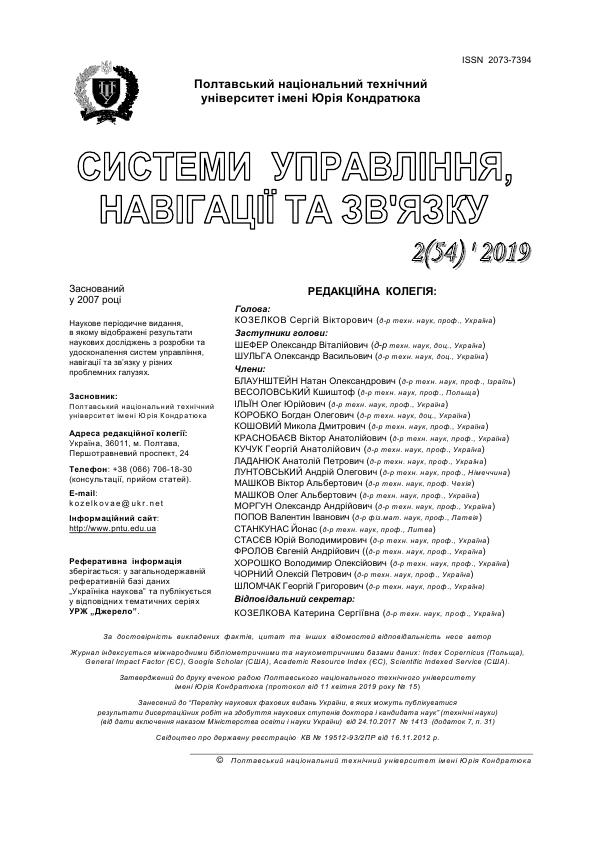SITUATION MODEL OF THE USER CHOICE IN THE RECOMMENDER SYSTEM
DOI:
https://doi.org/10.26906/SUNZ.2019.2.159Keywords:
recommendation system, recommendations based on content, recommendations based on user proximity, multi-layered graphAbstract
The subject matter of the article is the process of building recommendations by consumers on the choice of goods and services, which are implemented in recommender systems based on taking into account the choice of similar users and the corresponding properties of goods. The peculiarity of such processes is that when building recommendations, the interests of similar users are taken into account, but not enough attention is paid to changes in the patterns of behavior of such users over time. The goal is to develop a situational presentation of a user choice in the form of a multi-layer graph, each layer of which reflects an object component, and the sequence of layers is a temporary component of the situation, which allows to take into account changes in the objects of consumer interest. Tasks: detail the features of the choice of objects by users of recommender systems, taking into account explicit and implicit feedback; develop a situational model of user choice, taking into account changes in consumer interests. The methods used are: methods for building recommendations on the choice of goods and services based on collaborative filtering, methods for building recommendations based on content filtering. The following results are obtained. The features of the graph representation of the "user-object" interaction are highlighted, taking into account the object and time aspects in recommender systems. A graphical multi-layered situational model of user choice has been developed, taking into account the changing needs in the choice of goods and services over time. Conclusions. The scientific novelty of the results is as follows: A situational model of user choice in a recommender system in the form of a multilayer graph is proposed. Each layer of the model is defined by a bipartite graph whose vertices correspond to users and objects of their interest. This layer reflects the relationship between users and objects at a certain time interval. Scales of arcs of a graph reflect the number of objects selected by users or the rating of these objects for implicit or explicit feedback, respectively. The sequence of layers of the graph determines the change in consumer preferences over time. Relationships between the layers of the graph are set through the connections between the respective objects. The proposed model of user choice makes it possible to highlight the situation in which the choice was made by consumers similar to the current user of the recommender system. This situation is characterized by a subset of user-object pairs. The selected subset of pairs can later be used to conduct collaborative filtering, which improves the accuracy of recommendations based on taking into account changes in consumer interests over time.Downloads
References
Rashid A. M., Albert I., Cosley D., Lam S. K., Konstan J. A. (2002). Getting to know you: learning new user preferences in recommender systems. Proceedings of the international conference on intelligent user interfaces, 127–34.
Schafer J. B., Konstan J., Riedl J.( 1999). Recommender system in ecommerce. Proceedings of the 1st ACM conference on electronic commerce, 158–66.
Konstan J. A, Riedl J. (2012). Recommender systems: from algorithms to user experience. User Model User-Adapt Interact, 22, 101–23. DOI 10.1007/s11257-011-9112-x.
Джонс T. (2014). Рекомендательные системы: Часть 1. Введение в подходы и алгоритмы. Developer Works. Available at: https://www.ibm.com/developerworks/ru/library/os-recommender1/os-recommender1-pdf.pdf. (accessed 01.03.2019).
Aggarwal C. C. Recommender Systems: The Textbook. New York: Springer, 2017. 498 p.
Resnick P., Varian H.R. (1997). Recommender system’s. Communications of the ACM, 40(3), 56–58.
Чалий С.Ф., Лещинський В.О., Лещинська І.О. (2018). Моделювання контексту в рекомендаційних системах. Проблеми інформаційних технологій, 1(023), 21-26.
Чалий С.Ф., Лещинський В.О., Лещинська І.О. (2018). Інтеграція локальних контекстів споживачів в рекомендаційних системах на основі відношень еквівалентності, схожості та сумісності. Process mining Materials of the VII International Scientific Conference «Information-Сontrol System and Technologies»,142-144.
Чалый С.Ф., Прібильнова І.Б. (2017). Побудова ситуаційного представлення знань на основі аналізу логів. Вісник Національного технічного університету "ХПІ". Серія : Системний аналіз, управління та інформаційні технології, 28(1250), 70-73.
Чалый С. Ф., Прибыльнова И.Б. (2016). Событийно-ситуационное моделирование темпоральных зависимостей. Сучасні напрямки розвитку інформаційно-комунікаційних технологій та засобів управління: Матеріали п’ятої міжнародної науково-технічної конференції, 35.




